By Dino Brunori
This is the second of a series about Etceterinis on the Mille Miglia
A mystery (solved?)In 2016, during the Milan Autoclassica fair, the Pandolfini auction house auctioned an original MM sportcar based on the Fiat 500A, better known as the Topolino. Such a sportcars were common in the early editions of the race after WW2, with a lot of small artisans making different models. There was not a great deal of information on this peculiar car, apart that it entered the 1950 MM with the crew Boccardi – Schreiber and it did not finish the race. The car was known as the Fiat 500A Mor & Sca, had a Siata head, but who built it was a mystery. An original picture taken on the start line showed the car registered in Brescia, and the two pilots were from Brescia as well.
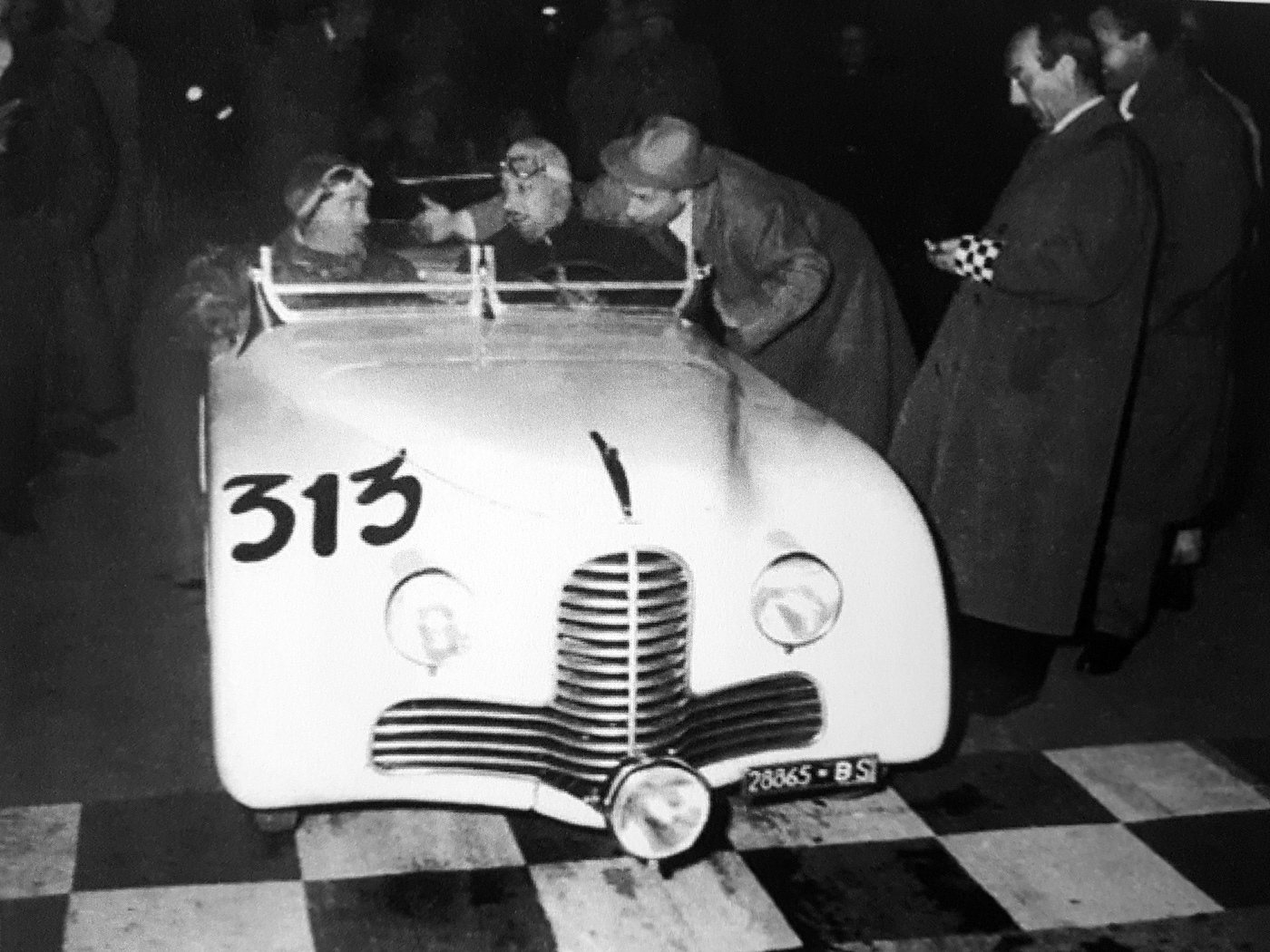
On the start line of the 1950 Mille Miglia with the crew of Boccardi-Screiber. Copyright archivio Brunori.
In the days preceding the auction in various forums on the web the hypothesis about the origin of the car began, with someone who said that Mor & Sca were the short for of Morelli and Scaglietti, the two famous bodymakers of the Maserati and Ferrari sportcars. This caught my attention: I thought the hypothesis was nonsense and I decided to do more in-depth research, starting from the registration plate BS28865.
I found the certificate of origin of the car: it shows that in March 1949 the company Mor&Sca bought a complete chassis of a Fiat Topolino from the Fiat Massari dealership in Brescia. In the left corner of the document there is also a note that says ‘Testa Siata n. 2025’ confirming that the car was equipped with the Siata head from the beginning, a period tuning used to significantly increase the power output of the engine. The name of the company Mor & Sca came from the initials of the two partners, Moretti and Scalvini, and the company was active in iron and steel trading. First confirmation: no Morelli and Scaglietti involved at all!
And the body? Nothing: no emblems, no names apart from an elegant Mor & Sca script on the tail; a real mystery which needed further research. I traced the son of the first owner Boccardi; he remembered that his father talked about a body shop that was in the east side of town, in a neighborhood that had the name of a saint. Well, the east side of Brescia has two suburbs with names of saints, Sant’Eufemia and San Zeno. No memories of a skilled artisan in San Zeno, but yes, in Sant’Eufemia there was Carrozzeria Fona. This one was a very well-known name in the local sportcar world; in fact the Fona workshop was set up in the years prior to WW2 and it’s still in operation today. Until the 1960s it was run by Achille Fona, a gentleman driver who raced a couple of post war editions of the Mille Miglia with a sport 1100 built by himself; another couple of cars were made for clients. This could be an interesting clue.
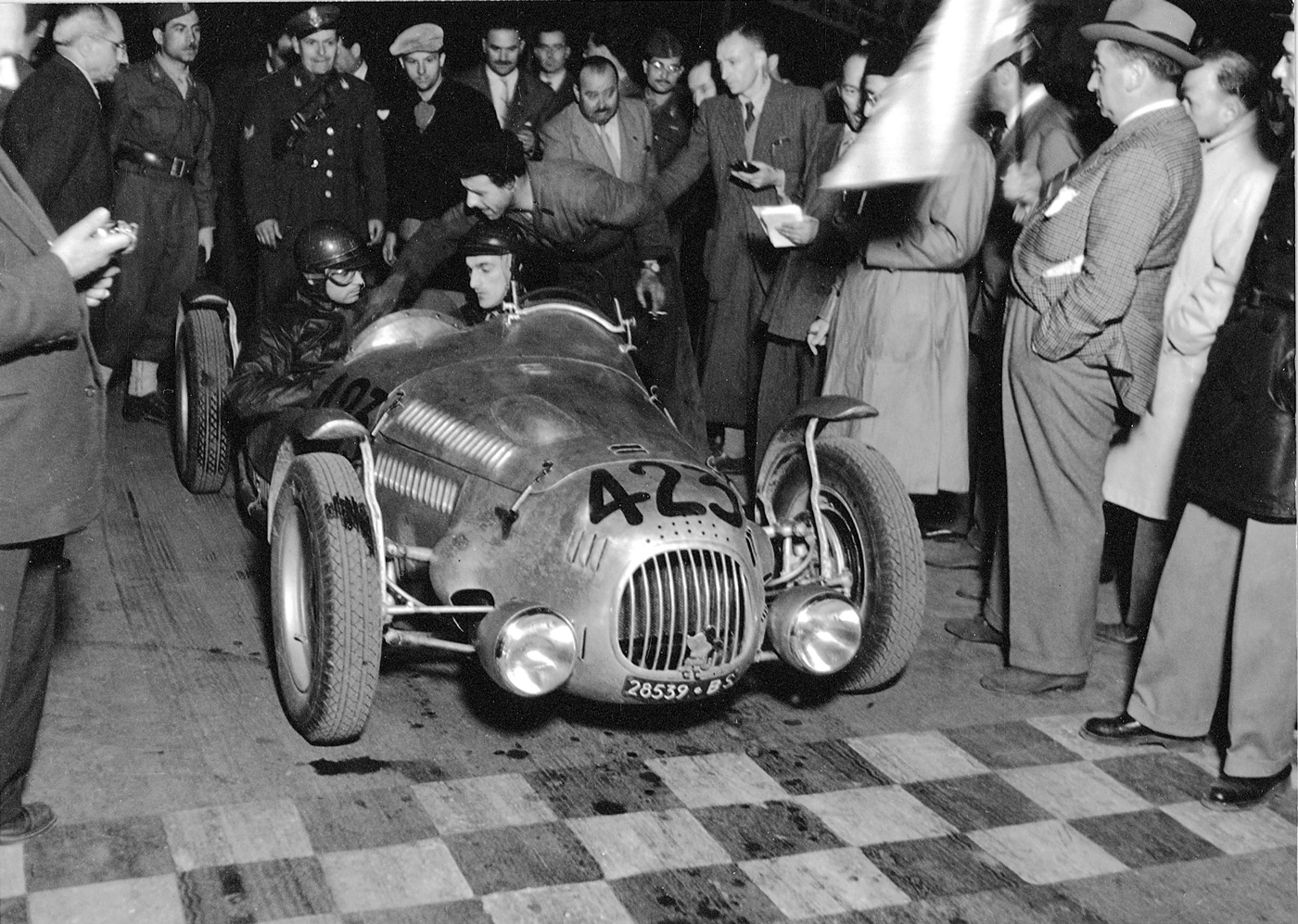
Achille Fona with Speriani at the start line of the 1949 Mille Miglia with his ‘siluro con parafanghini’, the car he built and raced in a couple of editions of the Mille Miglia. The car was based on mechanical elements of Fiat 1100B. Copyright – archivio Curami
In the archive I also had a photograph of a Topolino with a Fona body built in 1949 that shows a frontal in a ‘ship’s bow’ style very similar to the Mor & Sca design; in addition, the aluminum frieze with the pointed mascot on the bonnet is the same on the two cars and coincides with an element often used on the custom-made Topolinos of the period.
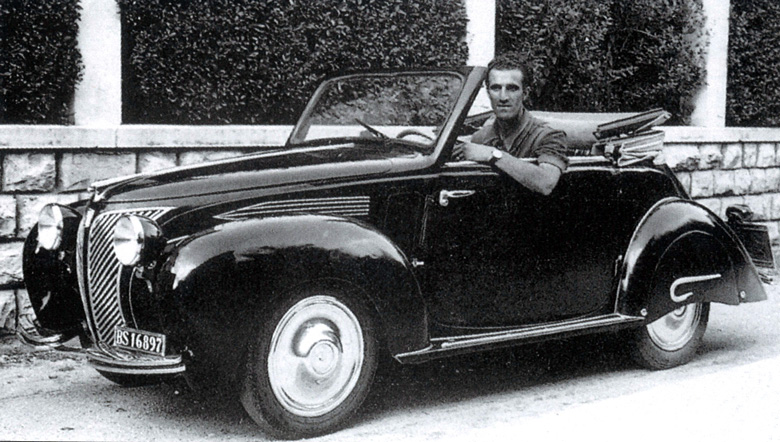
The Fiat Topolino fuoriserie 1949, one of the cars bodied by Carrozzeria Fona that shows some details similar to the 500 Mor & Sca. Copyright archivio Brunori
This was a long time ago and all the main actors of our history are no longer with us, so we do not have direct witnesses. But as Sherlock Holmes said ‘many clues form a test.’ Although there is no documented evidence, I think with little margin of error that the 500A Mor & Sca can be ascribed to Carrozzeria Fona. It is a further memory of the heroic times, when each of us could have built his own car and run the Mille Miglia, ‘the greatest car race in the world’.
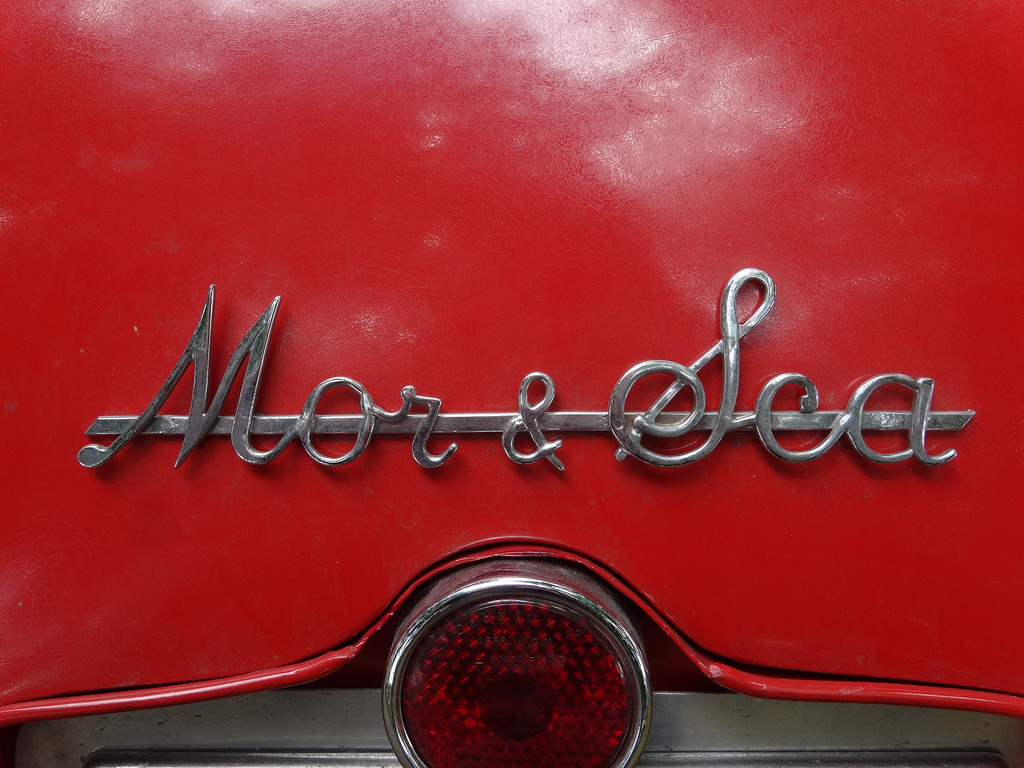
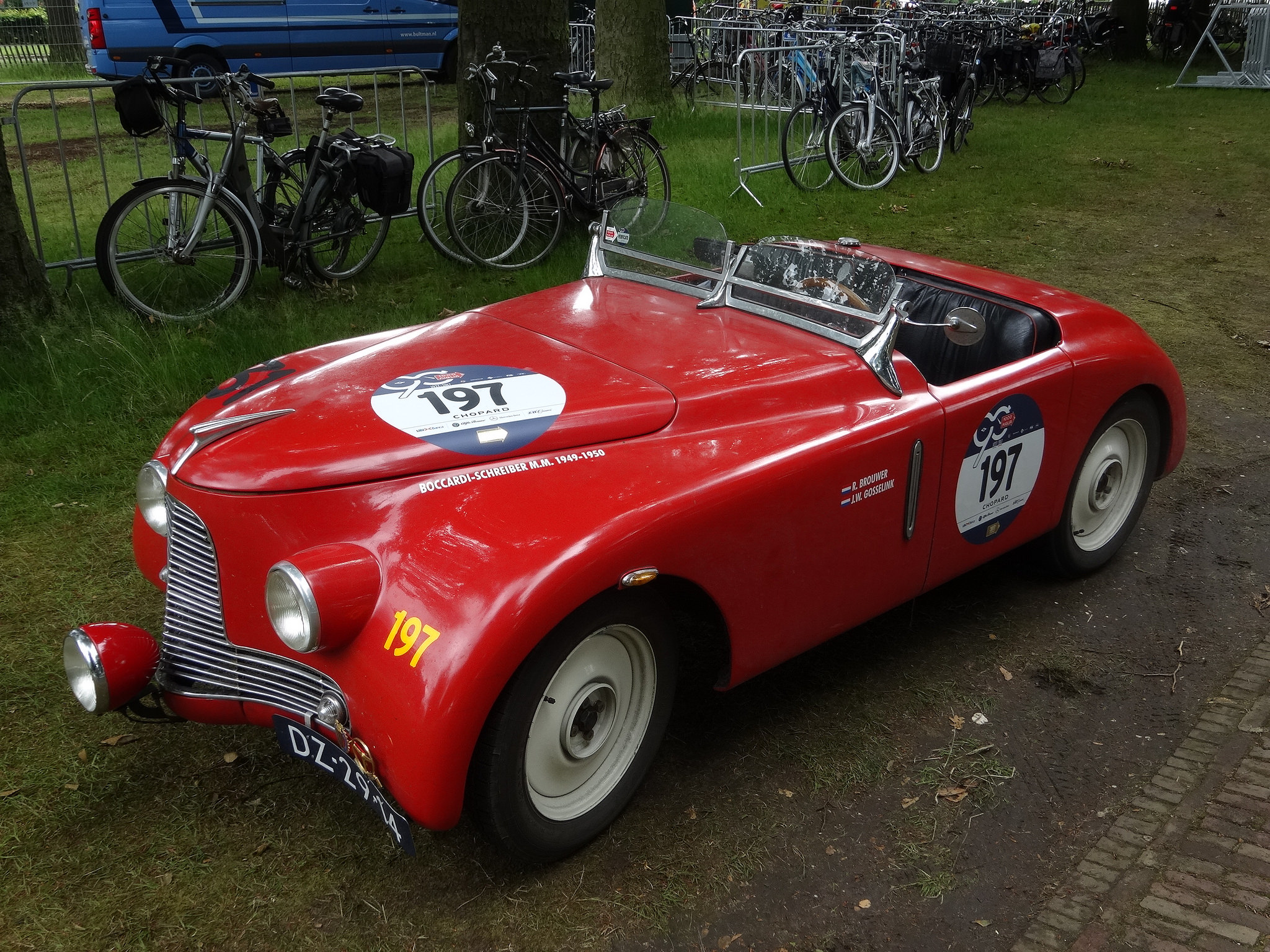
Excellent detective work, Pete
In a recent visit to the MM Musem in Brescia the number and variety of one-off or very limited production variations on Fiat 1100 or “Topolino” themes was pretty spectacular. After owning my Siata 300BC for over three decades I thought I was pretty well versed in odd little Italian racers, and yet there were a number of cars I had never before heard of, no less seen. 1949 Zanussi 1100 Sport? Check! 1947 AMP Special? Check! 1947 Rovelli Fiat 1100 Testadoro Spider Hardtop? Check! Plus varieties of various Bandinis, Morettis, Siatas, and others including a number of models I had not seen before. It continues to amaze me how innovative, enthusiastic, and in most cases, aesthetically talented some of these companies and builders were in the post-WWII era in a devestated country. While not the prettiest example, the Mor & Sca certainly adds to that pantheon.
Marty,
Thanks! But of course all the credit goes to Dino Brunori…
Pete
Fascinating write up – I really enjoyed it.
Bill